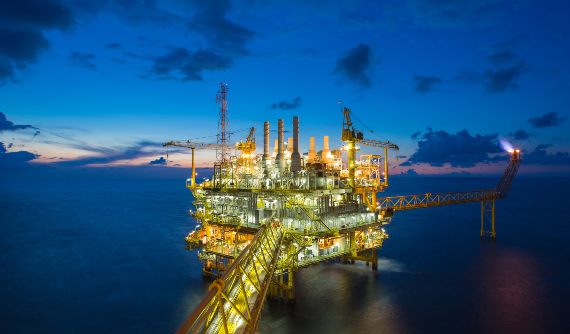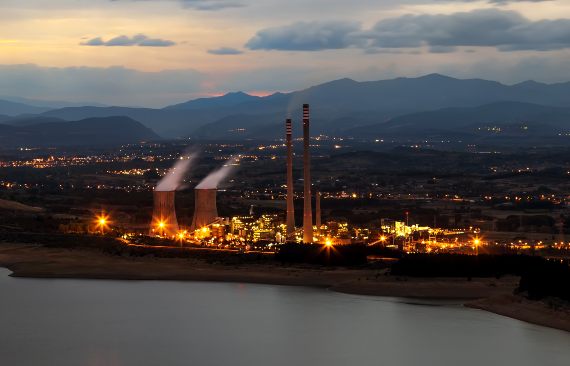Interview with Luis Díaz Fernández, President of the Spanish Technology Platform for CO2 (PTECO2)
What are CCUS and what role do they play in achieving the Sustainable Development Goals?
The acronym CCUS (which stands for carbon capture, use, and storage) is an umbrella term for different technologies capable of capturing, transporting, storing geologically, and using carbon dioxide. These technologies are recognized as a climate change mitigation tool and, therefore, contribute to the achievement of Sustainable Development Goal number 13, which refers to “Climate Action”. Their role is, without a doubt, essential for managing carbon emissions that are unavoidable or technically difficult to avoid, and to achieve what we call “negative emissions”.
What is the origin of carbon capture, transport, storage and use technologies? Since when do these technologies exist?
The knowledge and use of CCUS technologies became widespread in the U.S. in the 1970s, mainly as a result of their application in capture and use in Enhanced Oil Recovery (EOR) activities. Over the years, these technologies also spread across Europe. Today, thanks to ongoing research and development efforts, a second generation of CCUS technologies is already available, including amine capture or “chemical looping”. Asia has been focusing on them for a number of years now, and we believe that Latin America will be the next to turn to them to fight against climate change.

What is their current state of development? Can we already consider them a powerful tool for curbing CO2 emissions?
According to data from the Global CCS Institute, there are already 65 commercial CCUS facilities across the globe. Of these, 26 are already up and running which are capable of capturing and storing close to 40 Mt of CO2 per year. Therefore, we are talking about 40 Mt that are no longer pumped into the atmosphere. Undoubtedly, CCUS are a great tool for curtailing CO2 emissions, which are not bound by any technological barriers and which only need certain conditions to be fully implemented.
Is CO2 storage safe? What security measures are you adopting to control the risks pointed out by some studies (potential leakage, damage to marine biodiversity when stored at the bottom of the ocean due to water acidification, etc.)?
Yes, but this question requires a slightly longer answer. Let me start pointing out that CO2 is a chemical element that is not toxic and does not explode. In fact, the CO2 molecule is very stable, so much so that every person devoted to science and who handles it for its transformation, complains about this fact compared to other less stable chemical elements. In addition, it is an element inherent to human beings, which we exhale when breathing.
Regarding its geological storage, we need to keep in mind there are several conditions that must always be met: In first place, we are talking about depositing CO2 in natural subsoil geological formations, i.e., formations that already exist in nature, such as depleted gas fields or saline aquifers, the most abundant formations in our country. In addition, they must be at least 800 m below the surface and, on top of the distance, these geological stores must have a seal rock, a natural element of the formation, acting as a barrier and preventing the vertical flow of CO2 to the atmosphere. Finally, with the passage of time and as a result of a series of natural processes, the CO2 becomes trapped as if it were forced into the gaps in a sponge. On top of everything, techniques are applied at all stages of the process, including continuous monitoring and control of the geological storage site. Therefore, if things are done well, leaks are highly unlikely to occur, and, as we said at the beginning, since it is an element that is neither explosive or harmful, in the event of a leakage, it would simply be released into the atmosphere.

In the case of oceanic storage –i.e. the storage of CO2 on the seabed at high pressure, so that it is the pressure of the water sheet itself that keeps the CO2 retained – there are clear reasons for opposing it, the most obvious being that it alters the pH of the marine environment and this alteration could potentially affect underwater organisms. Therefore, at PTECO2 we currently view it as a less acceptable alternative from an environmental standpoint, compared to the geological CO2 storage option, and also more expensive.
Can you tell us about any ongoing projects researching these technologies that may be showing particularly promising results?
Even though geological storage is the only viable mitigation option for storing large volumes of captured CO2, the uses and transformation of CO2 have become increasingly important in recent years due to all the options they offer. Direct uses include applications within the food and beverage industry (beverage carbonation, protective atmospheres, beer pressure, etc.) and in fire extinguishing and water purification systems, whereas the transformation focuses in the production of high value-added products, with applications in the fine chemical industry and in the production of fuels, among others. Right now, the range of alternatives for using or extracting value out of captured CO2 seems to be virtually endless.
Regarding legislation, what laws regulate carbon dioxide storage in Spain? And in Europe? Are they enough?
Geological storage is regulated in Europe by Directive 2009/31/EC and I want to emphasize that Spain was the first country to transpose this directive in Law 40/2010. However, regulatory development has been stalling ever since and we need it to be able to continue in order to provide the security needed by any consortium considering embarking on a project of such nature.
What should we be demanding states and international organizations to do to promote these technologies? Are there any support programs already in place that they might benefit from?
In Europe there have been several interesting financing programs since, more or less, the launch of the 7th Framework Program for Research and Development in 2007, which, already then, included the form of subsidy. This R&D&i support formula is still prevalent in the European context and, in fact, some good opportunities for CCUS technologies are expected to emerge from the Horizon Europe – Work Programme 2021-2022. However, Spain has veered away from it, opting for non-reimbursable tranches instead, of varying significance, or loans subject to advantageous conditions… formulas that, ultimately, are failing to build up the trust that companies need to carry out investments.
In our opinion, reverting to the subsidy format would encourage submissions to these bidding processes.
Comments on this publication